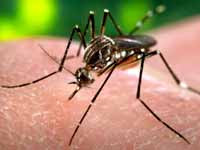Ozone Hole Discoverer Issues Another GLOBAL WARNING!
TV 3 New Zealand-January 27 2008
Jonathan Shanklin was one of a group of scientists who helped bring about the Montreal Protocol – the international agreement on ozone control.
However, he says the world is still not moving fast enough.
On the Antarctic coastline where the ozone hole is open, he drew a diagram in the snow, illustrating how the world used to be with its protective layer; how it appeared 25 years ago when he first discovered the hole in the ozone layer and how that hole appears today.
“It’s probably doubled in size since the first discovery,” Mr Shanklin said. “And it was a wakeup call to the planet on how easily it is to change the atmosphere.”
His discovery led to a world-wide ban on ozone-destroying chemicals in hairsprays and fridges, slowing the growth of the ozone hole.
In decades to come, the hole is expected to close again.
Mr Shanklin has a warning about the climate changes to come.
“It won’t just be the Antarctic ice sheets breaking up,” he warned. “It will be glaciers flowing faster into the sea, the sea level rising and we will see the effects of that back in England.”
He says climate conferences where governments discuss the problem are not good enough.
“We need action and we need action now,” Mr Shanklin said. “This is a bit like putting the breaks on a lorry. You don’t stop immediately, but you perhaps will slow down enough so that you’re in control when you get to the future. At the moment, we’re not in control.”
NASA Data Reveals 'Average' Ozone Hole in 2007
Each year, the depleted region in Earth's protective ozone layer over the Antarctic, or "ozone hole," reaches its largest size during a period in September. Data from a NASA satellite are now in, and images created from the data reveal the extent of the hole in 2007 was about average when compared to measurements from the last few decades.

Data from NASA's Earth-observing Aura satellite show that the ozone hole peaked in size on Sept. 13, reaching a maximum area extent of 9.7 million square miles – just larger than the size of North America. That's "pretty average," says Paul Newman, an atmospheric scientist at NASA Goddard Space Fight Center, when compared to the area of ozone holes measured over the last 15 years. Still, the extent this year was "very big," he says, compared to 1970s when the hole did not yet exist. +
Ozone Facts
What is Ozone?
Ozone is a colorless gas. Chemically, ozone is very active; it reacts readily with a great many other substances. Near the Earth’s surface, those reactions cause rubber to crack, hurt plant life, and damage people’s lung tissues. But ozone also absorbs harmful components of sunlight, known as “ultraviolet B”, or “UV-B”. High above the surface, above even the weather systems, a tenuous layer of ozone gas absorbs UV-B, protecting living things below.
What is a Dobson Unit?
The Dobson Unit (DU) is the unit of measure for total ozone. If you were to take all the ozone in a column of air stretching from the surface of the earth to space, and bring all that ozone to standard temperature (0 °Celsius) and pressure (1013.25 millibars, or one atmosphere, or “atm”), the column would be about 0.3 centimeters thick. Thus, the total ozone would be 0.3 atm-cm. To make the units easier to work with, the “Dobson Unit” is defined to be 0.001 atm-cm. Our 0.3 atm-cm would be 300 DU.
What is the Ozone Hole?
Each year for the past few decades during the Southern Hemisphere spring, chemical reactions involving chlorine and bromine cause ozone in the southern polar region to be destroyed rapidly and severely. This depleted region is known as the “ozone hole”.
The area of the ozone hole is determined from a map of total column ozone. It is calculated from the area on the Earth that is enclosed by a line with a constant value of 220 Dobson Units. The value of 220 Dobson Units is chosen since total ozone values of less than 220 Dobson Units were not found in the historic observations over Antarctica prior to 1979. Also, from direct measurements over Antarctica, a column ozone level of less than 220 Dobson Units is a result of the ozone loss from chlorine and bromine compounds.
Data from NASA's Earth-observing Aura satellite show that the ozone hole peaked in size on Sept. 13,2007 reaching a maximum area extent of 9.7 million square miles(24.7Area (million sq. km)) just larger than the size of North America. That's "pretty average," says Paul Newman, an atmospheric scientist at NASA Goddard Space Fight Center, when compared to the area of ozone holes measured over the last 15 years. Still, the extent this year was "very big," he says, compared to 1970s when the hole did not yet exist.

Situation at 2007 December 28
The ozone hole of 2007 is over. The temperature of the ozone layer is now highest over Antarctica and cools northwards. It is too warm for polar stratospheric clouds (PSCs) to exist. Generally across Antarctica, ozone values are around 300 DU. Values are now slowly dropping towards the normal autumn normal minimum. In general the circum-polar stratospheric vortex was more disturbed this year than it was last year, however there were also periods of stability. Some areas of Antarctica saw ozone values down to ozone hole levels (less than 220 DU) in mid June, suggesting the possibility of early chemical depletion, combined with some dynamic processes.
In mid July the minimum temperature of the Antarctic stratosphere at 70 & 50 hPa was close to the normal, although that at 30 hPa was below the normal, and I suggested the likelihood of another strong ozone hole year. Early August saw the largest ozone hole recorded for this time of year, although at the same time very high ozone levels existed over the northern Antarctic Peninsula. The vortex was more circular in mid September but returned to an elliptical shape and initially warmed slowly. In mid September the ozone hole area reached a maximum of just over 24 million square kilometres, but it then slowly shrank as the vortex warmed further. A spring warming took place over the Pacific coast of Antarctica and the Antarctic Peninsula in late October, however this subsided as the ozone hole became more symmetric again.
A second major warming took place towards the end of November, but subsided in early December. Around December 8 the ozone hole was briefly the largest on record for the date. The tip of South America and the Falkland Islands saw ozone levels below 250 DU on August 24, with South Georgia experiencing similar levels on September 4. The fringes of the ozone hole were over South Georgia on September 11. The area was intermittently affected from September 22 to October 22, with South Georgia particularly affected on September 25, when values dropped below 175 DU. The Falklands and South Georgia were affected for a final time between November 23 and 25.
For nearly a billion years, ozone molecules in the atmosphere have protected life on Earth from the effects of ultraviolet rays.

In the past 60 years or so human activity has contributed to the deterioration of the ozone layer.

Only 10 or less of every million molecules of air are ozone. The majority of these ozone molecules resides in a layer between 10 and 40 kilometers (6 and 25 miles) above the Earth's surface in the stratosphere.

Each spring in the stratosphere over Antarctica (Spring in the southern hemisphere is from September through November.), atmospheric ozone is rapidly destroyed by chemical processes.
As winter arrives, a vortex of winds develops around the pole and isolates the polar stratosphere. When temperatures drop below -78°C (-109°F), thin clouds form of ice, nitric acid, and sulphuric acid mixtures. Chemical reactions on the surfaces of ice crystals in the clouds release active forms of CFCs. Ozone depletion begins, and the ozone “hole” appears.
Over the course of two to three months, approximately 50% of the total column amount of ozone in the atmosphere disappears. At some levels, the losses approach 90%. This has come to be called the Antarctic ozone hole.
In spring, temperatures begin to rise, the ice evaporates, and the ozone layer starts to recover
The ozone "hole" is really a reduction in concentrations of ozone high above the earth in the stratosphere. The ozone hole is defined geographically as the area wherein the total ozone amount is less than 220 Dobson Units. The ozone hole has steadily grown in size (up to 27 million sq. km.) and length of existence (from August through early December) over the past two decades.




